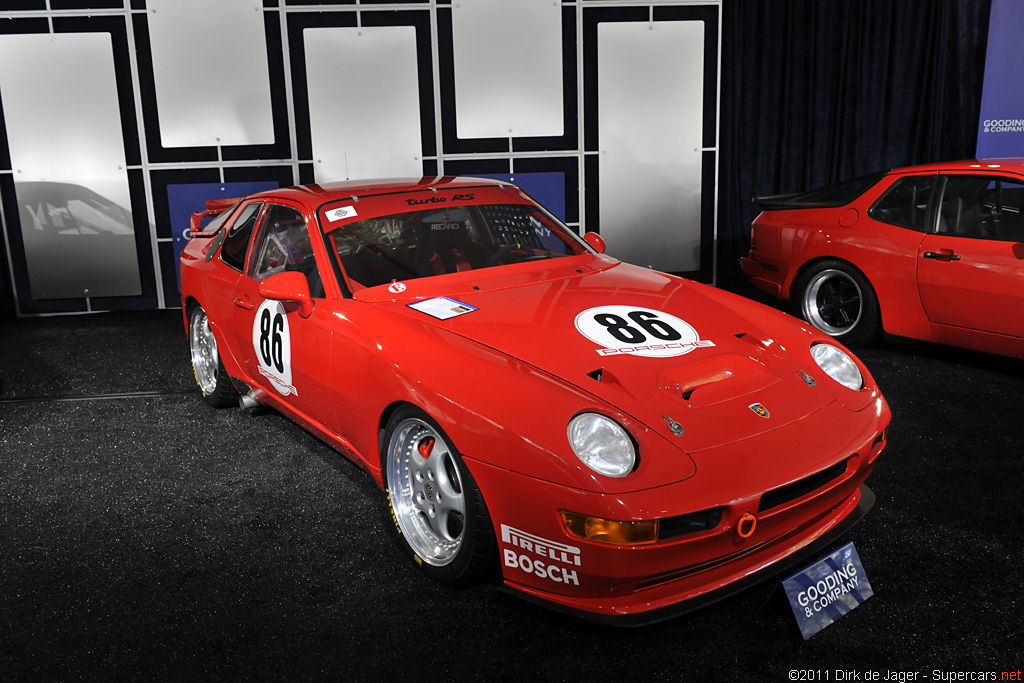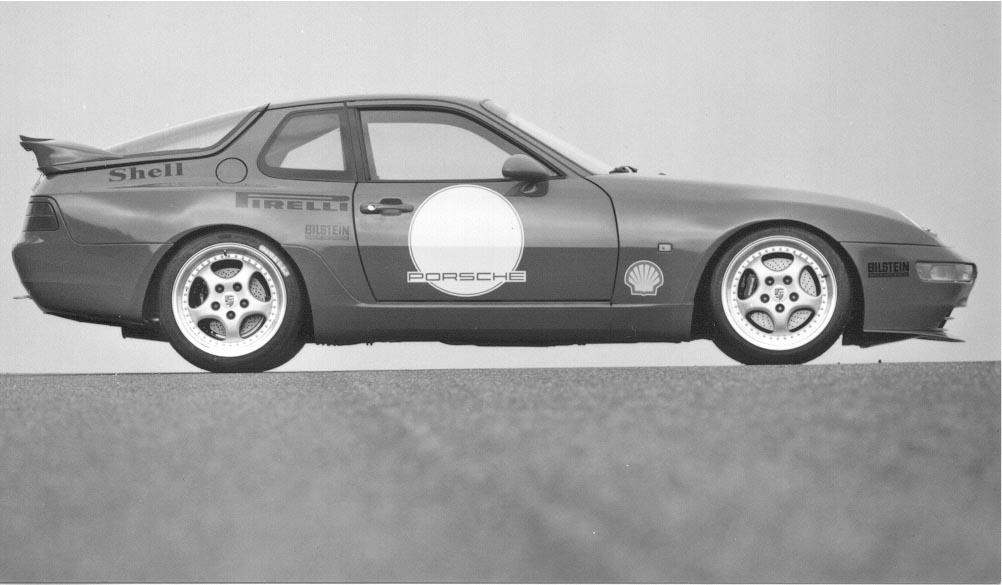(1992 – 1993) Porsche 968 Turbo RS – Ultimate Guide
The Story
The street legal 968 Turbo S and the racing Turbo RS were not only the coolest 968s, but are among the best Porsches made. The engine was a mix between the 8-valve head from the 944 Turbo and the 3-litre block from the normally aspirated 944 S2/968. The engine had massive 368 lb-ft/500 Nm of torque! The street Turbo S developed 224 kW (305 PS) and the racing Turbo RS 257 kW (350 PS).
The first turbo 968 was a red Turbo RS prototype built from a 1991 built 1992 model year US-version 968 Coupé (VIN: WP0AA2966NS820065). With near 1200 kg empty weight the Turbo RS had ~3.4 kg/PS, but in order to compete in the ADAC GT Cup, the required minimum weight had to be 1350 kg and the allowed power-to-weight ratio was 4 kg/PS (DIN hp). This meant that ballast was added to reach the weight minimum and the power was lowered to (1350/4=) 337.5 PS/248 kW. For the ADAC GT Cup shorter gears were also used.
The Turbo RS was built for customer racing as Porsche Motorsport was not in a position to spend on racing (without the victory in mind they don’t race). The Turbo RS was almost three times the price of the basic 968 coupé and although that doesn’t sound like too much for what it was, the Turbo RS found only four customers.
The first “production” RS (yellow, WP0ZZZ96ZPS896061) was sold to South Africa. The second “production” RS (black, WP0ZZZ96ZPS896062) was bought by Norwegian Erik Henriksen (it is not known if directly from Porsche or from a middle-man). And German Joest Racing got its ordered car, the third and last “production” RS (white, WP0ZZZ96ZPS896063) in the summer of 1993. In the first 1993 races they had used the red prototype from Porsche. All the three “production” Turbo RS had 1993 model year 968 Turbo VIN codes.
13 street legal 968 Turbo S (1993 model year chassis WP0ZZZ96ZPS890061…66, 68…71 and 1994 model year chassis RS890061…63) were built for lucky buyers. Considering the handling resulting from the near 50/50 weight distribution, the power and especially the torque, the 968 Turbo S might have been the best street legal Porsche produced at the time. The 964 Turbo 3.3 and Turbo 3.6 were more powerful, but a lot worse in critical situation handling. Interestingly, only the 911 Turbo 3.6 could beat the 968 Turbo 3.0 torque figure, but not the 911 Turbo 3.3.
All of the 968 Turbos were built with the 18″ 3-piece lightweight wheels (Turbo S M407, Turbo RS M406) and bucket seats (Turbo S M384/385, Turbo RS M388/389). Eleven out of thirteen Turbo S were built with air conditioning system, six with central locking, five with airbags. Some cars were uniquely equipped, for example:
WP0ZZZ96ZPS890063 Turbo S had regular 968 CS seat on passenger’s side (M382). This car was also the only one that was ordered without the model designation on the rear end (M498).
WP0ZZZ96ZPS896061 Turbo RS was built with passenger’s seat (M389 bucket), other RS had only driver’s seat.
While most of the Turbo S were built as German versions, there was one built for France (M124), one for Switzerland (M277) and one with North American spec (M553). The latter being the only 968 Turbo with third braking lamp.
The 968 Turbos being so rare, many replicas have been made around the world. How to tell a real thing:
- All the 968 Turbos have option code M510
- 968 Turbo S has the option code M042 and the VIN in the following form: WP0ZZZ96ZxS8900xx
- 968 Turbo RS “production” (non-prototype) cars have the option code M005 and the VIN in the following form: WP0ZZZ96ZPS89606x.
The first 968 Turbo RS (the prototype) was entered at races more than ten times between 1993-1996. While it started its life fully in Guards Red, when Joest Racing entered it at ADAC GT Cup in 1993, it had yellow front spoiler. The first race for this Turbo RS was on May 9, 1993 at the AVUS high-speed track. Joest Racing team driver Manuel Reuter started from 3rd position and finished 4th. This would remain the best result for the Turbo RS. Joest had rented the car from Porsche for two races and then Seikel Motorsport bought it from Porsche. Seikel had the car painted yellow for 1994 season. The car was entered at the Dijon 4 hours and Paris 1000 km before the ultimate Le Mans race. Unfortunately, accident took it out from the French 24 hour marathon.
Seikel entered the Turbo RS in Vallelunga and Spa 4 hour races and sold it after the 1994 season to Lloyd Hawkins, who had it painted back to red. The career continued in 1995 starting with Sebring 12 hour race.
The racing history of the yellow RS, the first “production” Turbo RS, that went to South Africa, is unknown. The black Turbo RS of Erik Henriksen was raced by him together with Justin Bell (son of Derek Bell) and other drivers in the 1994 season only (Paul Ricard 4 h, Jarama 4h, Dijon 4h, Paris 1000 km, Vallelunga 4 h). The Joest Racing white RS only saw one race in 1993 (the ADAC GT Cup Nürburgring race, which it didn’t finish due to an accident) and then was sold to Roock Racing, which raced it at the 1994 ADAC GT Cup.
It should be mentioned, that four more cars were built in Australia in mid-nineties using original factory Turbo RS parts. These were right-hand-drive cars.
VIN Numbers
- Number 1 – WPOZZZ96ZNS820065 – Red
- Number 2 – WPOZZZ96ZPS896061 – Yellow
- Number 3 – WPOZZZ96ZPS896062 – Black
- Number 4 – WPOZZZ96ZPS896063 – White














